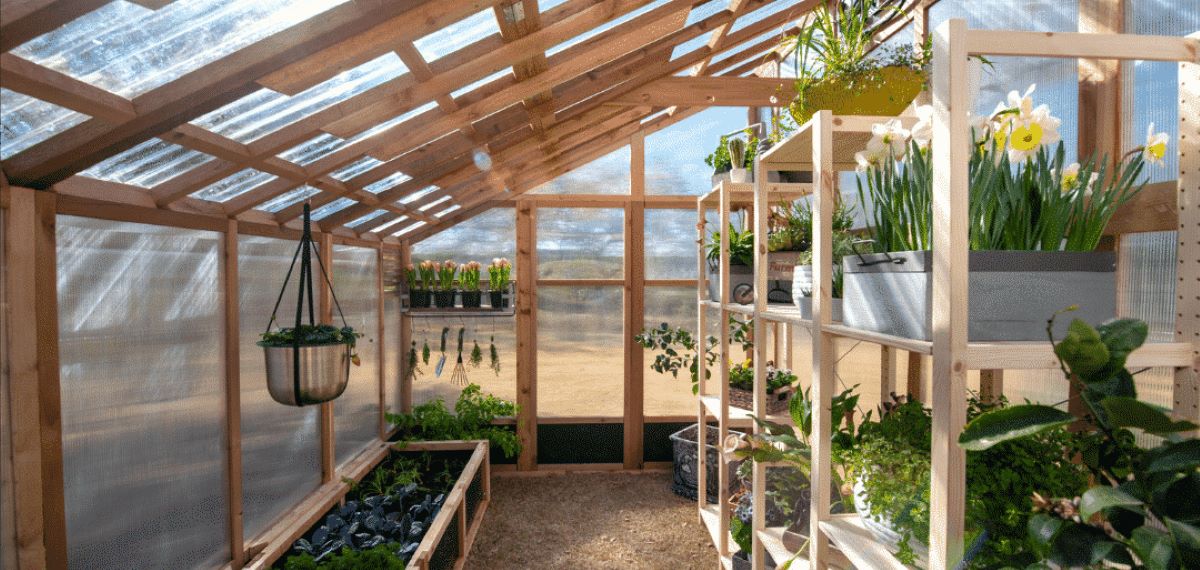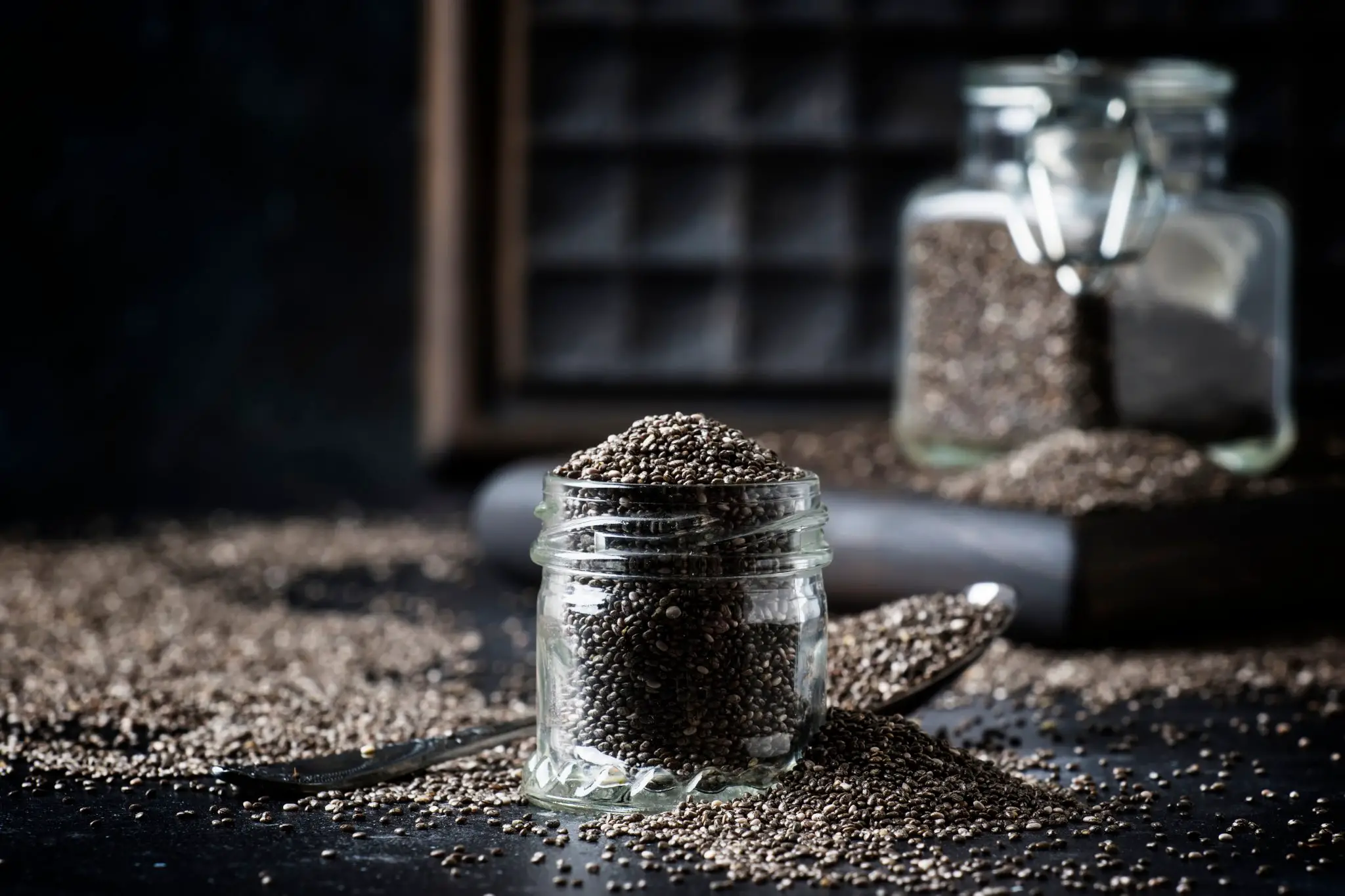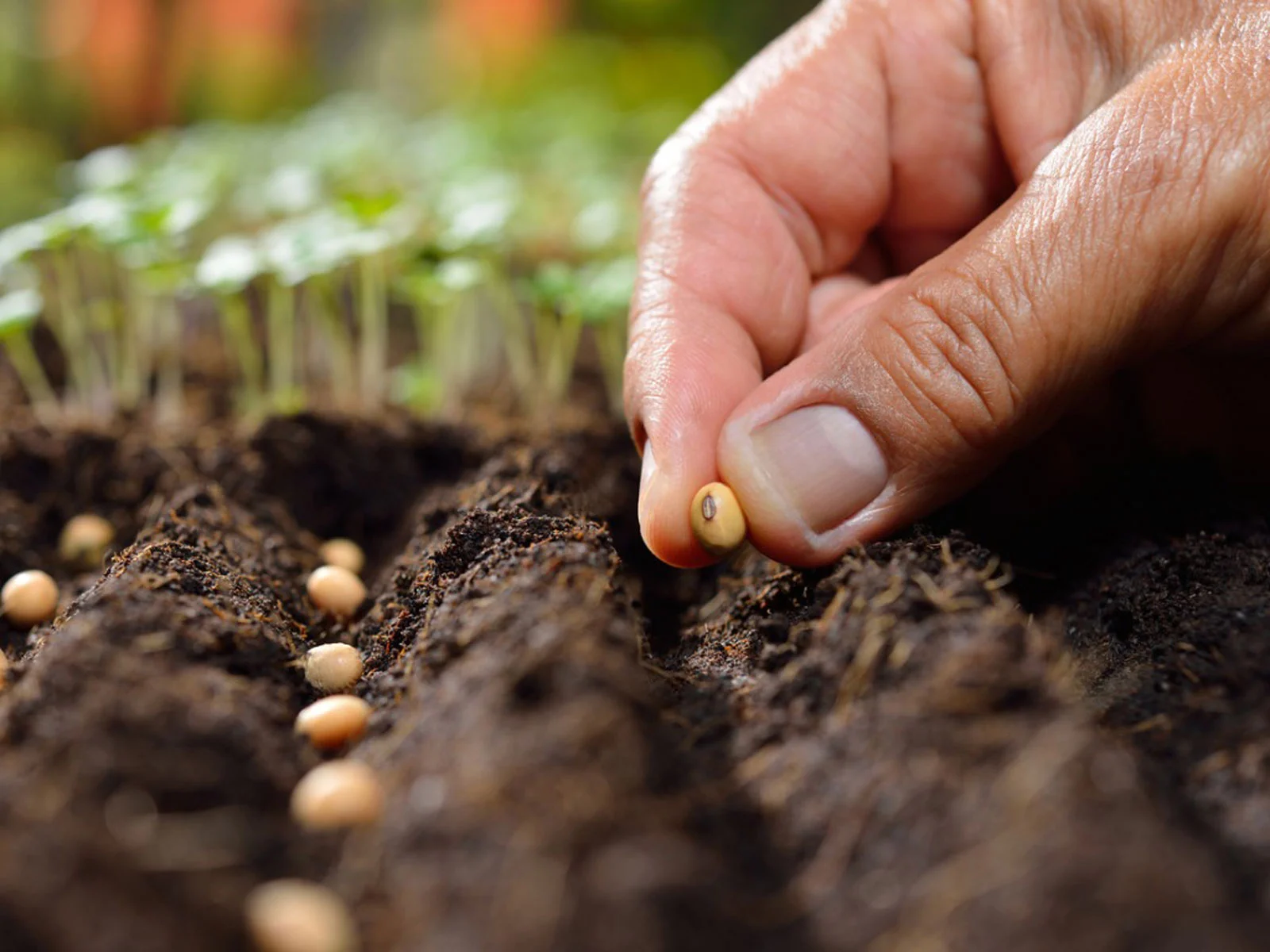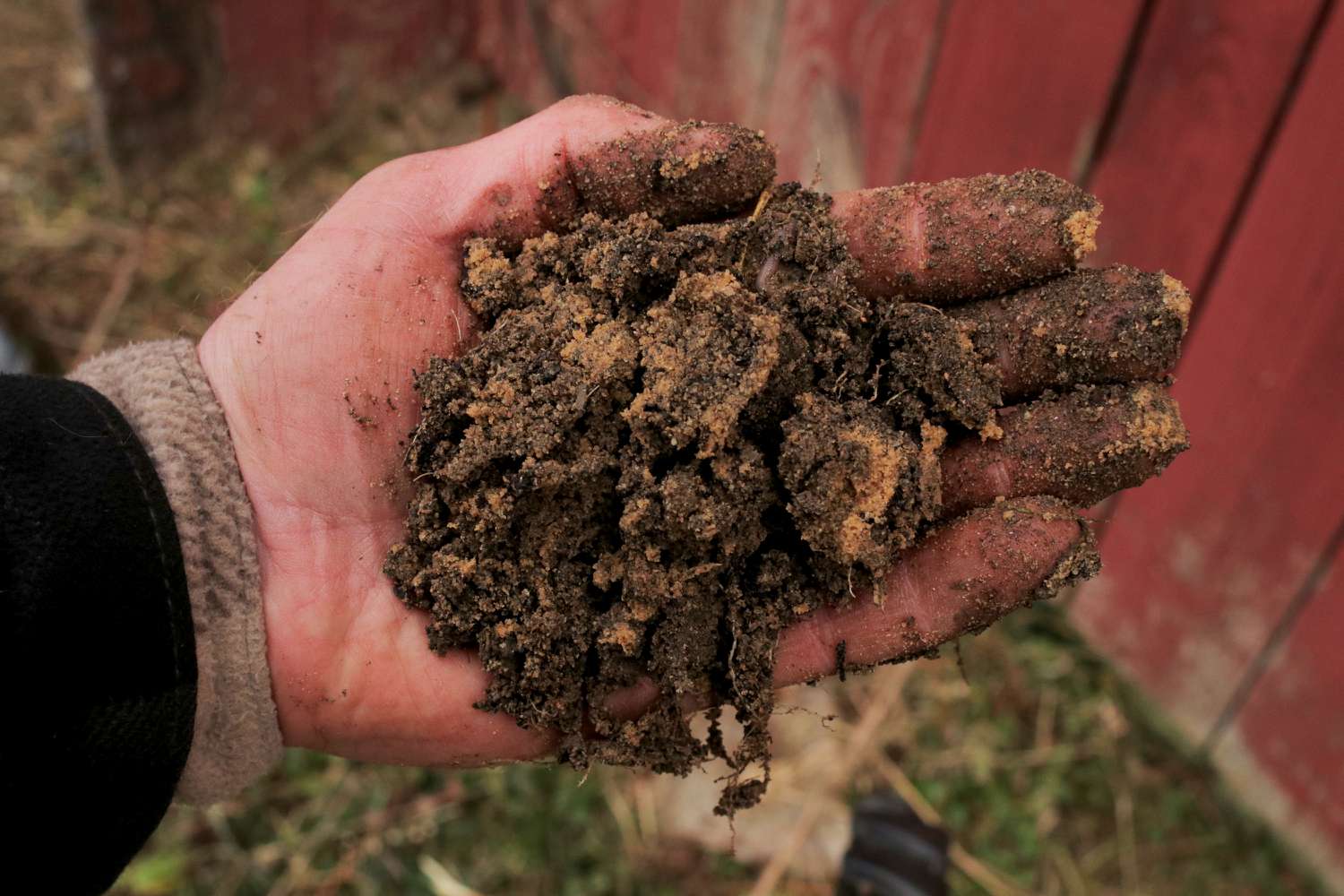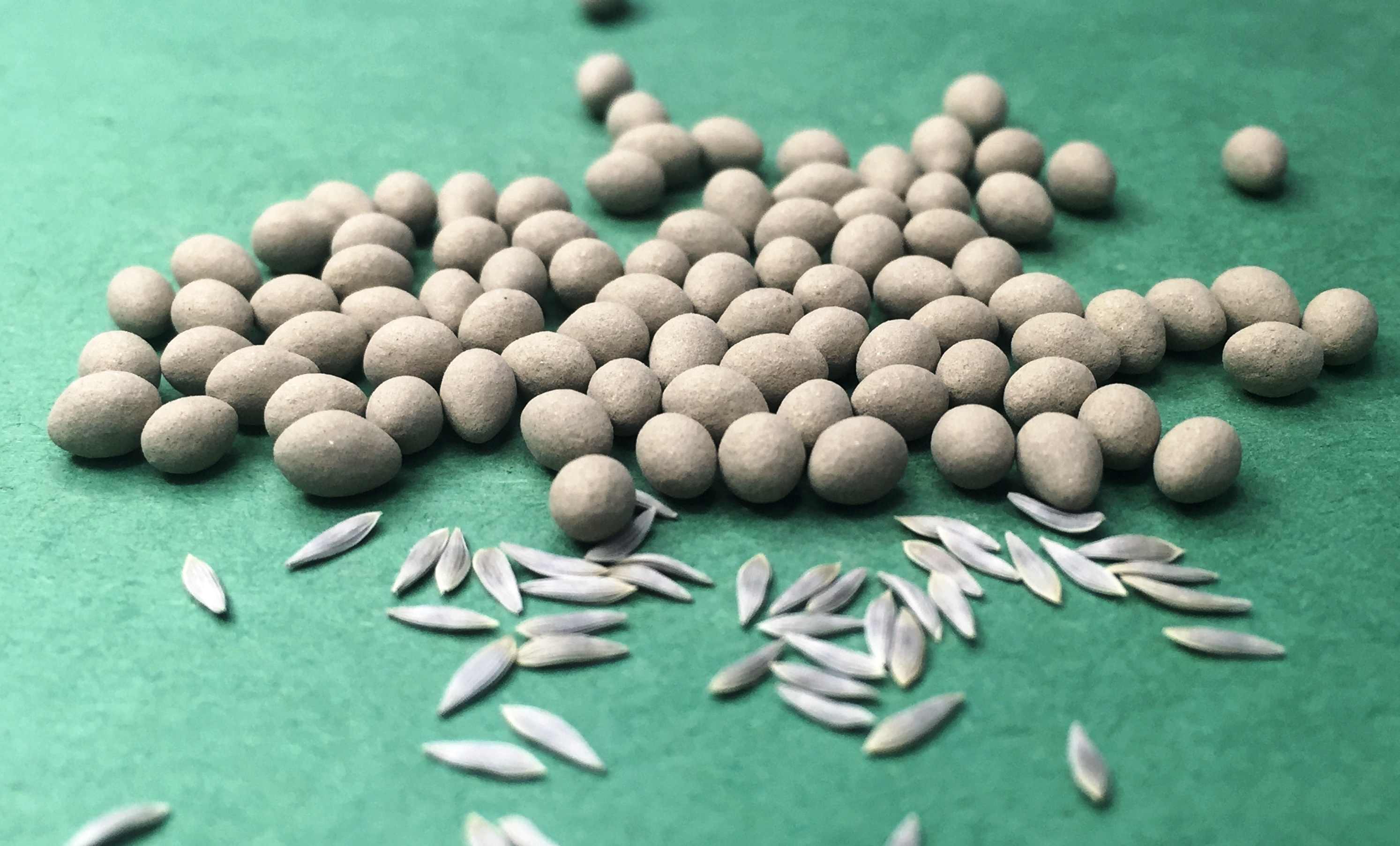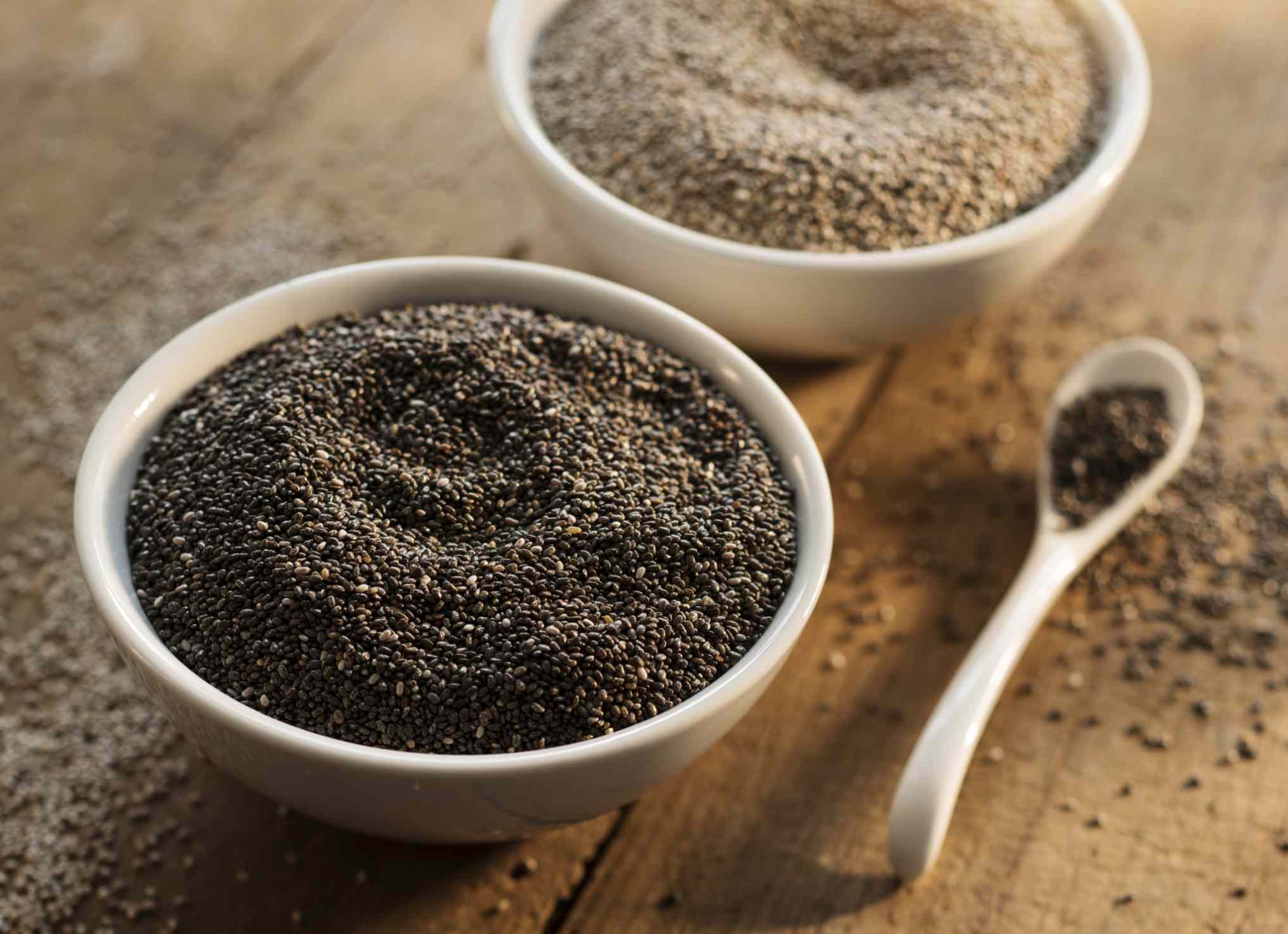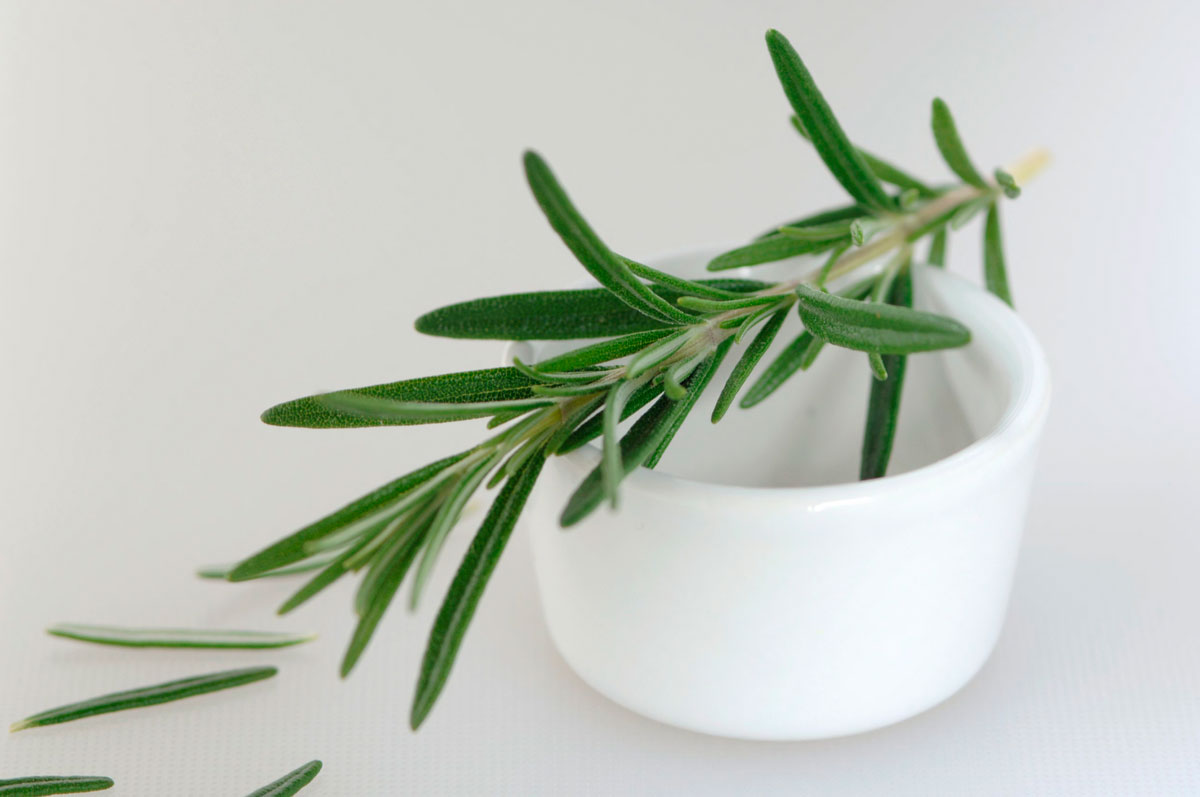Home>Gardening Tips and Tricks>Eco-Friendly Gardening>How Do You Use Chia Seeds
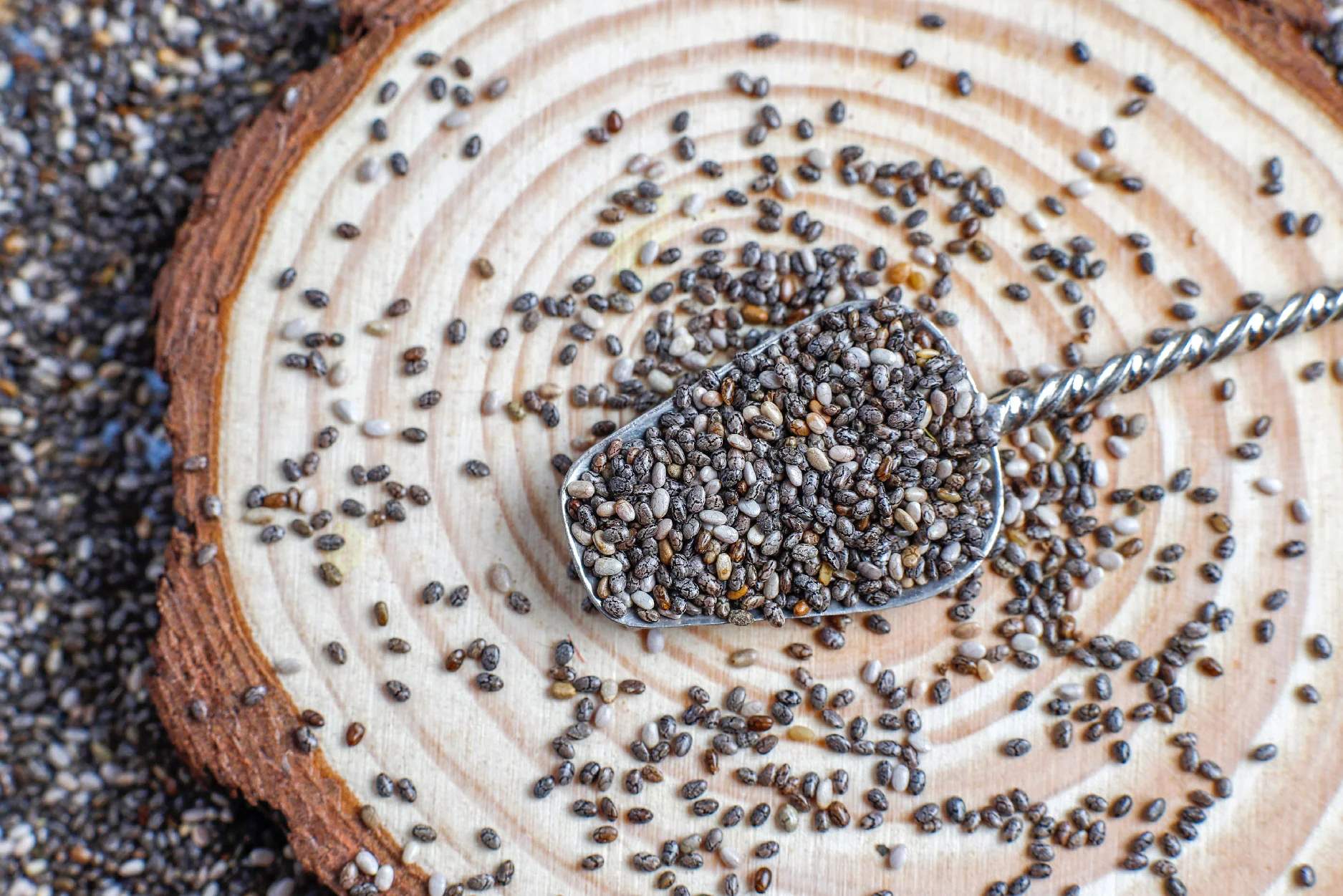

Eco-Friendly Gardening
How Do You Use Chia Seeds
Modified: February 9, 2024
Discover how to incorporate eco-friendly gardening practices with chia seeds. Learn how to use chia seeds for a sustainable and bountiful garden.
(Many of the links in this article redirect to a specific reviewed product. Your purchase of these products through affiliate links helps to generate commission for Chicagolandgardening.com, at no extra cost. Learn more)
Table of Contents
- Introduction
- What Are Chia Seeds?
- Nutritional Benefits of Chia Seeds
- Incorporating Chia Seeds into Your Diet
- Soaking Chia Seeds
- Chia Seeds in Baking
- Chia Seeds in Smoothies and Beverages
- Chia Seeds as Egg Replacements
- Chia Seeds as a Thickening Agent
- Chia Seeds in Salads and Dressings
- Chia Seeds in Desserts
- Precautions and Possible Side Effects
- FAQs about Using Chia Seeds
- Conclusion
Introduction
Welcome to the world of eco-friendly gardening! If you have a passion for gardening and want to make a positive impact on the environment, then eco-friendly gardening is the way to go. One key aspect of eco-friendly gardening is practicing sustainable gardening methods, which not only promote a healthy ecosystem but also minimize the use of synthetic fertilizers and harmful chemicals. In this article, we will explore the various techniques and tips for creating an eco-friendly garden that will not only benefit your plants but also contribute to a greener and more sustainable planet.
Eco-friendly gardening involves adopting practices that work in harmony with nature. By reducing waste, conserving water, and promoting biodiversity, you can create a thriving garden that supports local ecosystems and reduces your carbon footprint. Whether you have a small balcony, a backyard, or a sprawling landscape, there are plenty of eco-friendly gardening techniques that you can implement to grow a beautiful and sustainable garden.
In addition to being environmentally friendly, eco-friendly gardening practices also benefit your plants. By focusing on soil health, natural pest control, and proper plant selection, you can create an environment where plants can thrive naturally without the need for excessive inputs. This not only saves you time and money but also results in healthier plants that are more resistant to diseases and pests.
In this article, we will dive into the different aspects of eco-friendly gardening, including organic gardening practices, water conservation techniques, companion planting, and more. You will learn how to create a healthy and productive garden that is in tune with nature and supports biodiversity. So, whether you are a seasoned gardener or just starting out, get ready to delve into the world of eco-friendly gardening and discover the joy of growing your own food while being mindful of the environment.
What Are Chia Seeds?
Chia seeds have gained immense popularity in recent years, thanks to their impressive nutritional profile and numerous health benefits. But what exactly are chia seeds? Chia seeds come from the plant Salvia hispanica, which is native to Central and South America. They have been consumed for centuries by ancient civilizations like the Aztecs and Mayans, who recognized their incredible health properties.
Chia seeds are small, oval-shaped seeds that range in color from black to white. They have a mild, nutty flavor and a unique gelatinous texture when soaked in liquid. These tiny seeds are nutritional powerhouses, packed with fiber, protein, omega-3 fatty acids, antioxidants, and various minerals.
The high fiber content of chia seeds makes them excellent for digestion and gut health. They can absorb up to 10 times their weight in water, forming a gel-like substance in the stomach. This gel can help to regulate bowel movements and promote a feeling of fullness, aiding in weight management and preventing constipation.
Chia seeds are also a great plant-based source of protein, making them an ideal addition to a vegetarian or vegan diet. They contain all nine essential amino acids, making them a complete protein source. This is particularly beneficial for those looking to build and maintain muscle mass or follow a plant-based lifestyle.
In addition to their protein and fiber content, chia seeds are rich in omega-3 fatty acids, particularly alpha-linolenic acid (ALA). Omega-3 fatty acids are essential for brain health, heart health, and reducing inflammation in the body. Consuming chia seeds regularly can help support cardiovascular health, reduce the risk of chronic diseases, and enhance cognitive function.
Chia seeds are also a good source of antioxidants, which help protect the body against free radicals and oxidative stress. These antioxidants, such as quercetin and chlorogenic acid, can help reduce the risk of chronic diseases like heart disease and cancer.
Overall, chia seeds are a nutritious and versatile superfood that can be easily incorporated into your diet. Whether you sprinkle them onto your morning cereal, blend them into smoothies, or use them as an egg replacement in baking, chia seeds offer a wide range of health benefits and are a great addition to a balanced and eco-friendly diet.
Nutritional Benefits of Chia Seeds
Chia seeds are not only delicious but also incredibly nutritious. These tiny powerhouses are packed with a variety of essential nutrients that can contribute to overall health and well-being. Let’s explore the nutritional benefits of chia seeds:
- Fiber: Chia seeds are an excellent source of dietary fiber. Just one ounce of chia seeds contains about 10 grams of fiber, which is around 40% of the recommended daily intake. Fiber is essential for maintaining a healthy digestive system, promoting regular bowel movements, and preventing constipation.
- Protein: Chia seeds are a rich source of plant-based protein. They contain all nine essential amino acids, making them a complete protein source. Protein is important for building and repairing tissues, supporting muscle growth, and maintaining a strong immune system.
- Omega-3 Fatty Acids: Chia seeds are an excellent plant-based source of omega-3 fatty acids, specifically alpha-linolenic acid (ALA). Omega-3 fatty acids play a crucial role in brain health, reducing inflammation, and supporting heart health.
- Antioxidants: Chia seeds contain a variety of antioxidants, including quercetin and chlorogenic acid. Antioxidants help protect the body against free radicals and oxidative stress, reducing the risk of chronic diseases and promoting overall health.
- Minerals and Vitamins: Chia seeds are a good source of essential minerals such as calcium, phosphorus, magnesium, and manganese. They also provide vitamins like vitamin B, vitamin E, and vitamin K.
The combination of these nutrients makes chia seeds a nutrient-dense food that can provide numerous health benefits. Regularly incorporating chia seeds into your diet can help improve digestion, support healthy weight management, enhance cognitive function, and reduce the risk of chronic diseases like heart disease and diabetes.
One of the unique properties of chia seeds is their ability to absorb liquid and form a gel-like substance. This can be useful in maintaining hydration and providing a feeling of fullness, which can aid in weight loss efforts. Additionally, the gel-like texture can help slow down the digestion and absorption of carbohydrates, preventing blood sugar spikes and promoting stable energy levels.
Overall, chia seeds are a versatile and nutrient-packed superfood that can easily be incorporated into various dishes. From adding them to smoothies, yogurt, and oatmeal to using them as an egg substitute in baking, the possibilities are endless. Embrace the nutritional benefits of chia seeds and enjoy the goodness they bring to your health and well-being.
Incorporating Chia Seeds into Your Diet
Now that you know about the incredible nutritional benefits of chia seeds, it’s time to explore how to incorporate them into your daily diet. Chia seeds are incredibly versatile and can be easily added to a wide variety of recipes. Here are some creative and delicious ways to include chia seeds in your meals:
- Smoothies and Yogurt: Add a tablespoon or two of chia seeds to your favorite smoothie or yogurt. The seeds will add a delightful crunch and provide an extra boost of nutrition.
- Oatmeal and Cereal: Sprinkle a tablespoon of chia seeds onto your morning bowl of oatmeal or cereal. They will add texture, flavor, and a nutritious punch.
- Baking: Replace eggs with chia seeds in baking recipes to make them vegan-friendly. To replace one egg, mix one tablespoon of chia seeds with three tablespoons of water and let it sit until it forms a gel-like consistency.
- Homemade Energy Bars: Blend chia seeds with nuts, dried fruit, and honey to make your own homemade energy bars. These make for a nutritious and convenient snack on the go.
- Salads and Dressings: Sprinkle chia seeds over your salads for added texture and nutrition. You can also mix ground chia seeds with olive oil, lemon juice, and your favorite herbs to create a delicious homemade dressing.
- Beverages: Mix chia seeds into your favorite beverages, such as water, lemonade, or herbal tea. The seeds will absorb the liquid and create a gel-like texture, giving your drink an interesting twist.
- Puddings and Parfaits: Create a healthy and indulgent chia seed pudding by combining chia seeds with your favorite plant-based milk and sweetener. Layer the pudding with fresh fruits and granola to make a delightful parfait.
- Chia Seed Jam: Make a healthier alternative to traditional jam by combining mashed berries, chia seeds, and a natural sweetener. Let it sit for a few hours to thicken and enjoy it on toast, pancakes, or yogurt.
Remember that chia seeds can absorb liquid and form a gel-like consistency. This property makes them a great addition to recipes that require thickening, such as soups, sauces, and even homemade ice cream. Just be sure to adjust the liquid content accordingly to achieve the desired consistency.
When incorporating chia seeds into your diet, it’s important to start with small amounts and gradually increase as your body adjusts. One to two tablespoons per day is a good starting point. Keep in mind that chia seeds are high in fiber, so it’s essential to drink plenty of water throughout the day to support healthy digestion.
With their mild nutty flavor and versatile nature, chia seeds can effortlessly elevate the nutritional value of your meals. Get creative in the kitchen and explore different ways to incorporate these tiny powerhouses into your favorite recipes. Enjoy the added texture, flavor, and health benefits that chia seeds bring to your dishes.
Soaking Chia Seeds
Soaking chia seeds is a popular method for incorporating them into your diet. When soaked, chia seeds absorb liquid and develop a gel-like texture. This not only enhances the taste and mouthfeel but also provides additional health benefits. Here’s all you need to know about soaking chia seeds:
Soaking chia seeds before consuming them can help maximize their nutritional benefits. The gel-like substance that forms when chia seeds are soaked helps to slow down the digestion and absorption of carbohydrates, resulting in a more gradual release of energy. This can help stabilize blood sugar levels and provide sustained energy throughout the day.
Soaking chia seeds also makes them easier to digest as the gel-like coating helps to break down the seeds. This can be particularly beneficial for individuals with digestive issues or those who have trouble digesting the tiny seeds in their whole form. Soaking chia seeds can make them more easily assimilated by the body, allowing for better nutrient absorption.
Another advantage of soaking chia seeds is that it enhances their flavor and texture. The gel-like coating softens the seeds, reducing their crunchy texture and creating a smoother mouthfeel. This makes them more enjoyable to eat and allows for better blending into various recipes.
To soak chia seeds, simply combine them with a liquid of your choice in a ratio of about 1 tablespoon of chia seeds to 3 to 4 tablespoons of liquid. You can use water, plant-based milk, or fruit juice as the soaking liquid. Stir well to ensure the seeds are evenly distributed and let them sit for about 10-15 minutes. As they soak, the chia seeds will absorb the liquid and expand, forming a gel-like consistency.
You can adjust the soaking time to achieve your preferred consistency. If you prefer a thicker gel, let the seeds soak for a longer period. If you want a thinner consistency, reduce the soaking time. Experiment with different soaking times to find what works best for you and your preferred recipes.
Soaked chia seeds can be enjoyed in various ways. You can add them to smoothies, yogurt, or oatmeal for a nutritional boost. The gel-like consistency makes them great for making chia puddings or as a thickener in sauces and dressings. You can even use them in baking recipes to add moisture and texture to your creations.
Remember that soaked chia seeds have a limited shelf life and should be consumed within a few days. If you have any leftover soaked chia seeds, store them in an airtight container in the refrigerator to maintain their freshness.
Soaking chia seeds is a simple and effective way to enhance their nutritional value and make them more versatile for use in various recipes. Whether you enjoy them for their health benefits or their unique texture, soaked chia seeds are a great addition to a healthy and eco-friendly diet.
Chia Seeds in Baking
If you love to bake, chia seeds can be a wonderful addition to your recipes. These tiny seeds not only add a nutritious boost but also contribute to the texture and flavor of your baked goods. Here’s how you can incorporate chia seeds into your baking adventures:
1. Egg Replacement: Chia seeds can be used as an egg substitute in baking, making them a great option for those following a vegan or vegetarian diet or for individuals with egg allergies. To replace one egg, mix one tablespoon of chia seeds with three tablespoons of water and let it sit for about 5-10 minutes until it forms a gel-like consistency. This mixture can be used as a replacement for one egg in your recipes.
2. Texture and Moisture: Adding chia seeds to your baked goods can enhance their texture and moisture content. When chia seeds come into contact with moisture, they form a gel-like substance, creating a soft and moist texture in your final product. This is especially beneficial for recipes like muffins, cookies, and cakes where a light and moist texture is desired.
3. Fiber and Nutritional Boost: Chia seeds are an excellent source of dietary fiber, which can help improve digestion and promote a feeling of fullness. Incorporating chia seeds into your baked goods can increase the fiber content, making them more satisfying and nutritious. This is particularly useful in recipes where the flour or other ingredients may be low in fiber.
4. Crunch and Nutty Flavor: When used as a topping or mix-in, chia seeds can add a delightful crunch and nutty flavor to your baked treats. Sprinkle chia seeds on muffins, bread, or granola bars before baking to add a lovely textural element. You can also mix them into the dough or batter for a subtle nutty taste that complements a variety of flavors.
5. Healthier Alternatives: By using chia seeds in your baking, you can create healthier versions of your favorite treats. You can replace some of the butter or oil in a recipe with chia gel, reducing the overall fat content. This substitution can also increase the omega-3 fatty acid content, providing an added nutritional benefit.
Keep in mind that chia seeds absorb liquid, so you may need to adjust the other liquid ingredients in your recipe slightly. You may also need to experiment with the amount of chia seeds added to find the right balance for your desired texture. Start with a tablespoon or two and gradually increase as you become more familiar with how chia seeds affect your baked goods.
Overall, chia seeds can be a fantastic addition to your baking repertoire. They offer a range of health benefits, improve texture and flavor, and provide a nutritional boost to your sweet and savory treats. So, don’t be afraid to get creative and experiment with chia seeds in your baking adventures. You may just discover a whole new world of delicious and healthier treats!
Chia Seeds in Smoothies and Beverages
Chia seeds can be a wonderful addition to your smoothies and beverages, offering a nutritional boost and a unique texture. Whether you’re blending up a refreshing smoothie or enjoying a hydrating beverage, here’s how chia seeds can enhance your drink experience:
1. Thickening Agent: Chia seeds can act as a natural thickening agent in smoothies and beverages. When soaked in liquid, they form a gel-like substance that adds body and texture to your drinks. This can be particularly useful if you prefer thicker smoothies or want to create a satisfying and filling beverage.
2. Extra Fiber and Nutrients: Chia seeds are an excellent source of dietary fiber, which can aid in digestion and promote a feeling of fullness. Adding a tablespoon or two of chia seeds to your smoothies or beverages increases the fiber content and provides an additional nutritional boost.
3. Hydration: Chia seeds can help to keep you hydrated. As they absorb liquid, they form a gel-like coating around each seed, helping to slowly release the liquid as it passes through your digestive system. This can help with maintaining proper hydration levels, especially during hot weather or strenuous physical activities.
4. Texture and Visual Appeal: Chia seeds add a visually appealing texture to your smoothies and beverages. When mixed with liquid, they give a slight crunch and a fun, speckled appearance. This can make your drinks more interesting and enjoyable, both in terms of taste and presentation.
5. Energizing Boost: Chia seeds are rich in nutrients, including omega-3 fatty acids and protein. Incorporating these tiny powerhouses into your smoothies or beverages can provide an energizing and nourishing boost to start your day or recharge after a workout.
When using chia seeds in smoothies or beverages, it’s best to soak them beforehand for about 10-15 minutes. This gives the seeds enough time to absorb the liquid and develop a gel-like consistency. You can soak the chia seeds in water, plant-based milk, or juice before adding them to your blender or mixing them into your drink of choice.
Experiment with different flavor combinations by adding chia seeds to your favorite smoothie recipes. They pair well with fruits, greens, and other smoothie ingredients, creating a nutritious and satisfying blend. You can also sprinkle chia seeds onto the tops of your smoothies or beverages as a garnish or mix them into homemade juices for added texture and benefits.
Remember to start with a small amount of chia seeds, such as 1-2 tablespoons, and gradually increase the quantity as you become more comfortable with their texture and taste. Also, be sure to drink enough water when consuming chia seeds to promote proper hydration and prevent any potential digestive discomfort.
So, whether you’re blending up a post-workout smoothie or enjoying a refreshing beverage, consider adding chia seeds to take your drink to the next level. Embrace the nutritional benefits and captivating texture that chia seeds bring and enjoy a sip of goodness!
Chia Seeds as Egg Replacements
If you’re following a vegan or vegetarian diet, or if you have an egg allergy, chia seeds can be a fantastic substitute for eggs in your recipes. Chia seeds have a unique ability to absorb liquid and form a gel-like consistency, making them an excellent binding agent and adding moisture to baked goods. Here’s how you can use chia seeds as egg replacements:
To replace one egg in a recipe, simply combine one tablespoon of chia seeds with three tablespoons of water. Mix well and let the mixture sit for about 5 to 10 minutes until it thickens and forms a gel-like substance. This chia gel can be used as a vegan-friendly substitute for one egg in your recipe.
Chia seeds work well as an egg replacement because they provide a similar binding effect. The gel-like texture of the chia seeds helps ingredients stick together, giving structure to your baked goods. This is useful in recipes such as muffins, cookies, pancakes, and bread where eggs are typically used to bind the ingredients.
Chia seeds also add moisture to your baked goods, keeping them tender and moist. This is particularly beneficial in recipes that require a moist and soft texture, such as cakes, brownies, and quick breads. The added moisture from the chia gel helps prevent your baked goods from becoming dry or crumbly.
One of the advantages of using chia seeds as egg replacements is their nutritional profile. Chia seeds are rich in fiber, healthy fats, and various nutrients, offering an added nutritional boost to your recipes. They are also a great source of omega-3 fatty acids, which are beneficial for heart health and reducing inflammation in the body.
When using chia seeds as an egg substitute, keep in mind that they can change the texture and appearance of your final product. Baked goods made with chia seeds may turn out slightly denser or have a different color compared to those made with traditional eggs. It’s important to experiment with different recipes and adjust the amounts to achieve the desired texture and taste.
Chia seeds can be used as egg replacements in a wide range of recipes, including cookies, muffins, cakes, and pancakes. However, they may not be suitable for recipes where eggs play a more dominant role, such as custards or soufflés, as the chia seeds may not provide the same light and airy texture.
Overall, chia seeds offer a versatile and nutritious alternative to eggs in baking. Their binding properties and added moisture make them an excellent choice for vegan or egg-free recipes. So, the next time you’re in the kitchen, consider swapping out eggs for chia seeds and enjoy the delicious results!
Chia Seeds as a Thickening Agent
Chia seeds are not just a nutritious addition to your diet, but they can also act as a natural thickening agent in a variety of recipes. Their unique ability to absorb liquid and form a gel-like consistency makes them an excellent choice for thickening soups, sauces, and other dishes. Here’s how you can use chia seeds as a thickening agent:
When chia seeds come into contact with liquid, they rapidly absorb it and swell up, forming a gel-like coating around each seed. This gel-like coating has natural thickening properties, which can be beneficial when you want to achieve a thicker and smoother texture in your recipes.
Here are some ways to incorporate chia seeds as a thickening agent:
- Sauces and Gravies: Whether you’re making a tomato sauce, a creamy gravy, or a salad dressing, chia seeds can help thicken the mixture. Simply whisk a teaspoon or two of chia seeds into the sauce as it simmers, and the seeds will absorb the liquid, resulting in a thicker and richer consistency.
- Soups and Stews: If you want to add body and thickness to your soups and stews, chia seeds are a great solution. As you simmer the soup or stew, sprinkle in a tablespoon or two of chia seeds and stir well. The chia seeds will absorb the broth, creating a heartier texture while also adding nutritional value.
- Jams and Fruit Fillings: Chia seeds can be used to make homemade jams or fruit fillings. Combine mashed fruits with a tablespoon or two of chia seeds and let the mixture sit for about 15 minutes. The chia seeds will absorb the fruit juices, creating a jam-like consistency and reducing the need for excessive added sugar.
- Yogurts and Puddings: Chia seeds can be used to thicken yogurts, puddings, and other creamy desserts. Mix a tablespoon of chia seeds into yogurt or milk, and let it sit for a few minutes, allowing the seeds to absorb the liquid and create a thicker texture.
One of the advantages of using chia seeds as a thickening agent is that they offer additional health benefits. Chia seeds are an excellent source of dietary fiber, omega-3 fatty acids, and various nutrients. By incorporating chia seeds into your thickened dishes, you add nutritional value and promote better digestion.
When using chia seeds as a thickening agent, keep in mind that they can significantly alter the texture and appearance of your final dish. The gel-like consistency of the chia seeds may create a slightly different mouthfeel. It’s advisable to start with a small amount of chia seeds, especially if you’re experimenting with new recipes, and adjust the quantity according to your desired thickness.
Chia seeds offer a natural and healthy alternative to traditional thickeners like cornstarch or flour. Their ability to thicken recipes while providing additional nutritional benefits makes them a fantastic option for those looking to improve the texture of their dishes while maintaining a nutritious diet.
So, the next time you need to thicken a sauce, soup, or dessert, reach for chia seeds and enjoy the added benefits they bring to your culinary creations.
Chia Seeds in Salads and Dressings
Chia seeds can be a nutritious and flavorful addition to your salads and dressings. These tiny seeds not only provide a delightful crunch but also offer a boost of fiber, omega-3 fatty acids, and other essential nutrients. Here’s how you can incorporate chia seeds into your salads and dressings:
In Salads:
- Topping: Sprinkle chia seeds over your salad as a topping. They add a subtle nutty flavor and a delightful crunch, enhancing both the taste and texture of your salad.
- Mixed into the Greens: Mix a tablespoon or two of chia seeds into your salad greens before dressing them. This allows the seeds to blend in while still providing their nutritional benefits.
- In Grain Salads: Add chia seeds to grain-based salads like quinoa, bulgur, or couscous. They add an extra layer of texture and taste, making your grain salad more satisfying and nutritious.
- In Fruit Salads: Sprinkle a handful of chia seeds on top of fruit salads to complement the sweetness of the fruits. Chia seeds pair well with berries, melons, and citrus fruits.
- In Bean Salads: Incorporate chia seeds into bean salads for an additional nutritional boost. The seeds add texture and flavor to the beans, making your salad more interesting and enjoyable.
In Dressings:
- Thickener: Chia seeds can act as a natural thickening agent in dressings. Mix a tablespoon of chia seeds into your dressing base and let it sit for a few minutes. The chia seeds will absorb some of the liquid, creating a thick and creamy consistency.
- Garnish: Sprinkle chia seeds over your salads after tossing them with the dressing. They add visual appeal and a delightful texture to your salad.
- Homemade Dressing: Create a homemade salad dressing using chia seeds as an ingredient. Mix ground chia seeds with olive oil, vinegar, lemon juice, or your preferred dressing ingredients. The chia seeds will help thicken the dressing and impart a nutty flavor.
Chia seeds can be enjoyed in a variety of salads, from simple green salads to more complex grain or veggie-based salads. Their versatility allows them to complement a wide range of flavors and ingredients. Experiment with different combinations to discover your favorite chia seed-infused salad creations.
When using chia seeds in dressings, keep in mind that they may affect the texture and appearance. As the seeds absorb liquid, the dressing may thicken over time. It’s best to prepare dressings with chia seeds just before serving or adjust the liquid content accordingly if storing the dressing for later use.
Incorporating chia seeds into your salads and dressings not only adds a nutritional boost but also elevates the taste and texture of your dishes. So, embrace the goodness of chia seeds and enjoy their vibrant contribution to your salads and dressings!
Chia Seeds in Desserts
Chia seeds can be a delightful and nutritious addition to your dessert recipes. These tiny seeds offer a unique texture, a mild nutty flavor, and a range of health benefits. Whether you’re looking to add a nutritious twist to your favorite indulgences or explore new dessert creations, here’s how you can incorporate chia seeds into your sweet treats:
Puddings and Parfaits:
Chia seeds are commonly used to make delicious and healthy chia seed puddings. To make a chia pudding, combine chia seeds with your choice of plant-based milk, sweetener, and flavorings such as vanilla or cocoa powder. Let the mixture sit in the fridge for at least a few hours or overnight until it thickens into a creamy pudding-like consistency. You can enjoy it as is or layer it with fresh fruits, granola, or nuts to create a delectable parfait.
Cakes and Baked Goods:
Chia seeds can also be incorporated into cakes, muffins, and other baked goods to add texture and a nutritional boost. You can mix a tablespoon or two of chia seeds into your batter to provide a delightful crunch and increase the fiber and omega-3 fatty acid content of your treats. The seeds will absorb some of the moisture during baking, resulting in a moist and tender texture.
Chia Seed Jams:
Create a healthier alternative to traditional jams by making chia seed jam. Simply blend your favorite berries or fruits, mix them with chia seeds, and sweeten with a natural sweetener. Let the mixture sit for a few hours in the refrigerator, and the chia seeds will absorb the fruit juices and thicken the mixture into a spreadable and flavorful jam. Use it on toast, pancakes, or as a topping for yogurt and desserts.
Ice Cream and Sorbets:
Chia seeds can also be used in homemade ice cream or sorbet recipes to add texture and provide a nutritional boost. You can mix chia seeds into your ice cream base or blend them with fruit puree to create a creamy and nutritious frozen treat. The chia seeds will help to create a smoother texture and make your frozen desserts more satisfying.
When using chia seeds in desserts, keep in mind that they can absorb liquid and thicken the mixture. It’s important to adjust the liquid components in your recipes accordingly to achieve the desired consistency. You may want to experiment with different amounts of chia seeds to find the perfect balance of texture and taste in your sweet creations.
By incorporating chia seeds into your desserts, you not only enhance the texture and flavor but also benefit from their nutritional value. Chia seeds are rich in fiber, omega-3 fatty acids, and other essential nutrients, making your treats more satisfying and nutritious.
So, whether you’re making puddings, cakes, or jams, don’t hesitate to experiment with chia seeds in your dessert recipes. Enjoy the delightful crunch, nutritional benefits, and added creativity that chia seeds bring to your sweet indulgences!
Precautions and Possible Side Effects
While chia seeds offer numerous health benefits, it’s important to consume them in moderation and be aware of potential precautions and side effects. Here are some considerations to keep in mind when incorporating chia seeds into your diet:
Allergies: Although rare, some individuals may have allergies or sensitivities to chia seeds. If you have a known seed allergy or experience any adverse reactions after consuming chia seeds, such as hives, itching, or difficulty breathing, it’s important to seek medical attention immediately.
Digestive Issues: Chia seeds are rich in dietary fiber, which can be beneficial for digestion. However, consuming large amounts of chia seeds without proper hydration can potentially cause digestive discomfort, such as bloating or gas. It’s essential to drink plenty of water throughout the day to support healthy digestion and prevent any potential issues.
Medication Interactions: Chia seeds are generally safe to consume, but if you are taking any medications, it’s always a good idea to consult with your healthcare provider. Chia seeds may interact with certain medications, especially blood thinners, and may affect their efficacy. It’s important to be aware of any potential interactions and seek professional advice if needed.
Calorie Intake: While chia seeds are nutrient-dense, they also contain calories. If you’re watching your caloric intake, it’s important to account for the calories provided by chia seeds in your overall dietary plan. Adding chia seeds to your meals should be done in moderation and as part of a balanced diet.
Water Absorption: Chia seeds have the unique ability to absorb a significant amount of liquid. This can be beneficial when soaked or cooked, helping to create a gel-like consistency. However, it’s essential to be mindful of this property, especially if you have difficulty swallowing or a history of gastrointestinal issues. Drinking water alongside the consumption of chia seeds can help ensure proper hydration and prevent any discomfort.
It’s important to note that the potential side effects or precautions associated with chia seeds are rare and generally arise from consuming excessive amounts without considering individual needs and circumstances. As with any dietary additions or modifications, it’s always a good idea to listen to your body, practice moderation, and consult with a healthcare professional if you have any concerns or specific health conditions.
Incorporating chia seeds into your diet can be a fantastic way to enhance nutrition, promote wellness, and explore new flavors and textures. By being aware of potential precautions and adjusting your consumption accordingly, you can enjoy the benefits of chia seeds as part of a balanced and healthy lifestyle.
FAQs about Using Chia Seeds
As chia seeds gain popularity, it’s common to have questions about their usage, benefits, and potential considerations. Here are some frequently asked questions about using chia seeds:
1. How much chia seeds should I consume per day?
The recommended daily intake of chia seeds is about 1 to 2 tablespoons. Start with a smaller amount and gradually increase as desired. It’s important to listen to your body and adjust the quantity based on your individual needs and preferences.
2. How do I store chia seeds?
Chia seeds should be stored in an airtight container in a cool, dry place, such as a pantry or cupboard. Proper storage can help maintain their freshness and prevent them from becoming rancid. Refrigeration is not necessary but can prolong their shelf life.
3. Can I consume chia seeds without soaking them?
Yes, you can consume chia seeds without soaking them. However, some people prefer to soak or grind chia seeds to enhance their nutritional benefits and improve their digestibility. Soaking chia seeds can also create a gel-like consistency, making them easier to incorporate into certain recipes.
4. Can I bake with whole chia seeds?
Yes, you can bake with whole chia seeds. However, if you prefer a smoother texture in your baked goods, you can grind the chia seeds into a powder using a blender or coffee grinder. Ground chia seeds can be used as an egg substitute or added directly to batters and doughs.
5. Are chia seeds safe for children and pregnant women?
Chia seeds are generally safe for children and pregnant women when consumed in moderation. However, it’s important to consult with a healthcare professional before making any significant dietary changes, especially if you have specific health conditions or concerns.
6. Are chia seeds gluten-free?
Yes, chia seeds are naturally gluten-free, making them an excellent choice for individuals with gluten sensitivities or celiac disease. However, it’s always important to ensure that the chia seeds are sourced from reputable gluten-free sources to avoid cross-contamination.
7. Can I consume chia seeds if I have a nut allergy?
Chia seeds are not classified as a tree nut, but they may be processed in facilities that handle nuts. If you have a nut allergy, it’s always best to read the labels carefully or choose chia seeds that are specifically labeled as nut-free to avoid any potential cross-contamination.
These FAQs provide general information about using chia seeds. If you have specific concerns or individual health conditions, it’s always advisable to consult with a healthcare professional for personalized guidance and recommendations.
Remember, chia seeds can be a wonderful addition to a balanced and healthy diet, offering a wide range of nutritional benefits and culinary versatility. Enjoy exploring the possibilities and discovering how chia seeds can enhance your meals, snacks, and overall well-being!
Conclusion
Chia seeds are truly a remarkable ingredient that can elevate your eco-friendly gardening and culinary experiences. These tiny seeds offer a wide array of health benefits, including high fiber content, omega-3 fatty acids, and essential nutrients. Their ability to absorb liquid and form a gel-like consistency enhances the texture of dishes, whether in smoothies, puddings, or baked goods. Moreover, chia seeds are versatile and can be incorporated into various recipes, acting as a thickening agent, egg replacement, or nutritional booster.
When incorporating chia seeds into your diet, it’s important to start with small amounts and gradually increase as you become familiar with their texture and taste. Experiment with different recipes and find creative ways to use chia seeds in your favorite dishes. Remember to maintain proper hydration when consuming chia seeds to support healthy digestion and prevent any potential discomfort.
Additionally, it’s crucial to be aware of any potential allergies or interactions with medications. If you have specific dietary concerns or health conditions, it’s always best to consult with a healthcare professional for personalized advice.
By integrating eco-friendly gardening practices and incorporating chia seeds into your meals, you contribute to a sustainable lifestyle while enjoying the numerous benefits these little seeds have to offer. So, whether you’re enhancing the nutrient profile of your garden soil or exploring new flavors in the kitchen, embrace the power of chia seeds and cultivate a greener and healthier way of living.
